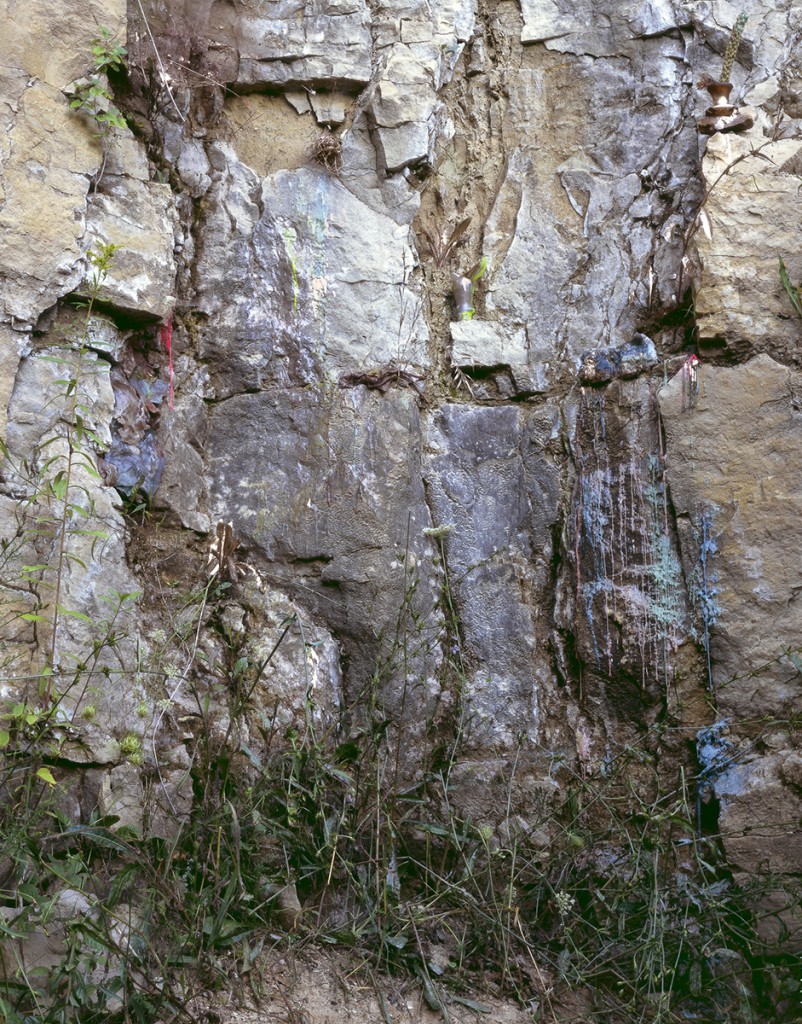2/10: REASONS TO CUT INTO THE EARTH // new works by HEIDI NORTON
REASONS TO CUT INTO THE EARTH
new works by HEIDI NORTON
FEBRUARY 10-29, 2012
Opening Reception: Friday, February 10, 7-10pm
Open Hours: Saturdays & Sundays 12-5pm
And by appointment
Johalla Projects
1821 w Hubbard St Suite 110, Chicago 60622
REASONS TO CUT INTO THE EARTH
- An archaeological dig: a prevalent way to recover human history is through archaeological excavation. Archaeology is a loose discipline. The methods of unearthing are scientific and restrained, but the things you look for when digging like an archaeologist are numerous and sometimes completely unknown.
- To see what’s growing underneath. She dug holes into the earth all summer, her hair tied up in a bandana. She built a studio in the woods, using the holes she dug as molds into which she poured colored wax, capturing flowers, insects, and weeds in the viscous bright liquid. (When big chunks of glaciers get stuck in earth, they create giant pools of ice that result in holes when they melt. Geologists call these holes “kettles,” and lakes often form in these depressions.) When she was a young girl in West Virginia, she dug holes to explore the parts of the world that were just barely invisible but still attainable to her. The work that she did digging those holes was unprofessionalized and undifferentiated. She could have been looking for fossils or diamonds or evidence of human history before her.
- A geology sample: this object contains a hidden story that helps to analyze the history of the land. Geology samples are beautiful tubes of stratified sediment, about as wide as tennis ball containers, created through special methods of drilling. You have to learn the language of the colors and textures of compacted sediment layering the cylinder to tell a story about the hidden parts of the earth. See: archaeology.
- Quarries and mines: this is a very violent thing to do. People who are paid to do this work often die. Sometimes it creates lakes to swim in after. (She grew up swimming in a quarry, so even to this day she cannot think of quarries without the warmth of that memory coming over her.) With quarries and mines, you are looking for something valuable, for treasures that you will bring elsewhere.
- Gardening: this is also a fairly violent way to cut into the earth, depending on what you’re gardening and whether you plan to pull it up or look at.
Page 5
In previous works, Norton uses prefabricated molds in a controlled studio environment to create geometric forms of wax and resin with plants embedded inside. In these newer works, she take these traditional studio materials and cast them into the earth, layering plants and other life inside.
Above, “Page 5”, is an excerpt from a chapter in “Art in the Earth: A Field Guide from the Soil to the Studio”, an artist book that will be included in the exhibition. Heidi is collaborating on this book project with writer Monica Westin. One version, using appropriated album boxes, will take the form of an artist monograph and field guide. A second variation will be available as a limited edition artist book.
 Casting of Rockface in the Paleozoic Plateau Region, Archival Pigment Print, 42×53, 2012
Casting of Rockface in the Paleozoic Plateau Region, Archival Pigment Print, 42×53, 2012
HEIDI NORTON received her MFA from the School of the Art Institute of Chicago in 2002. Her work has been exhibited all over Chicago in venues such as Monique Meloche Gallery, Dominican University, Andrew Rafacz Gallery, and Northern Illinois University Gallery. Nationally and internationally, Norton’s has been exhibited at the Contemporary Art Museum in Baltimore, the Knitting Factory in New York, as well as in Los Angeles, London, and Valenica, Spain. Norton was published in My Green City by Gestalten in 2011 and her artist profile was featured in the May/June issue of Art Ltd. This past year she had solo shows in San Francisco at Hungry Man Gallery, EBERSMOORE and NEIU in Chicago. Her solo exhibition at EBERSMOORE was reviewed in the September 2011 issue of Frieze and she was voted Solo Show of the Year by New City, 2011 and Top 10 Art Exhibition in Chicago, 2011 by TimeOut. She is represented by EBERSMOORE gallery in Chicago.
More information about Heidi Norton can be found at www.heidi-norton.com